#NoHoosierAlone centers the real actions of IU students—their decisions, actions, and attitudes—to challenge myths about substance use and mental health on campus.
When it comes to finding the facts, Hoosiers aren't alone
- The Indiana Lifeline Law provides immunity against public intoxication, minor possession, minor consumption, and minor transport of alcohol when law enforcement is called in a substance use-related emergency.
- The law does NOT provide immunity against criminal offenses such as providing alcohol to a minor, operating while intoxicated, or possession of a controlled substance (e.g. marijuana, cocaine, etc.)
- All of the following must be done for an individual to receive immunity:
- Provide full name and any other relevant information requested by law enforcement officers.
- Remain on the scene until law enforcement and emergency medical assistance arrive.
- Cooperate with authorities on the scene.
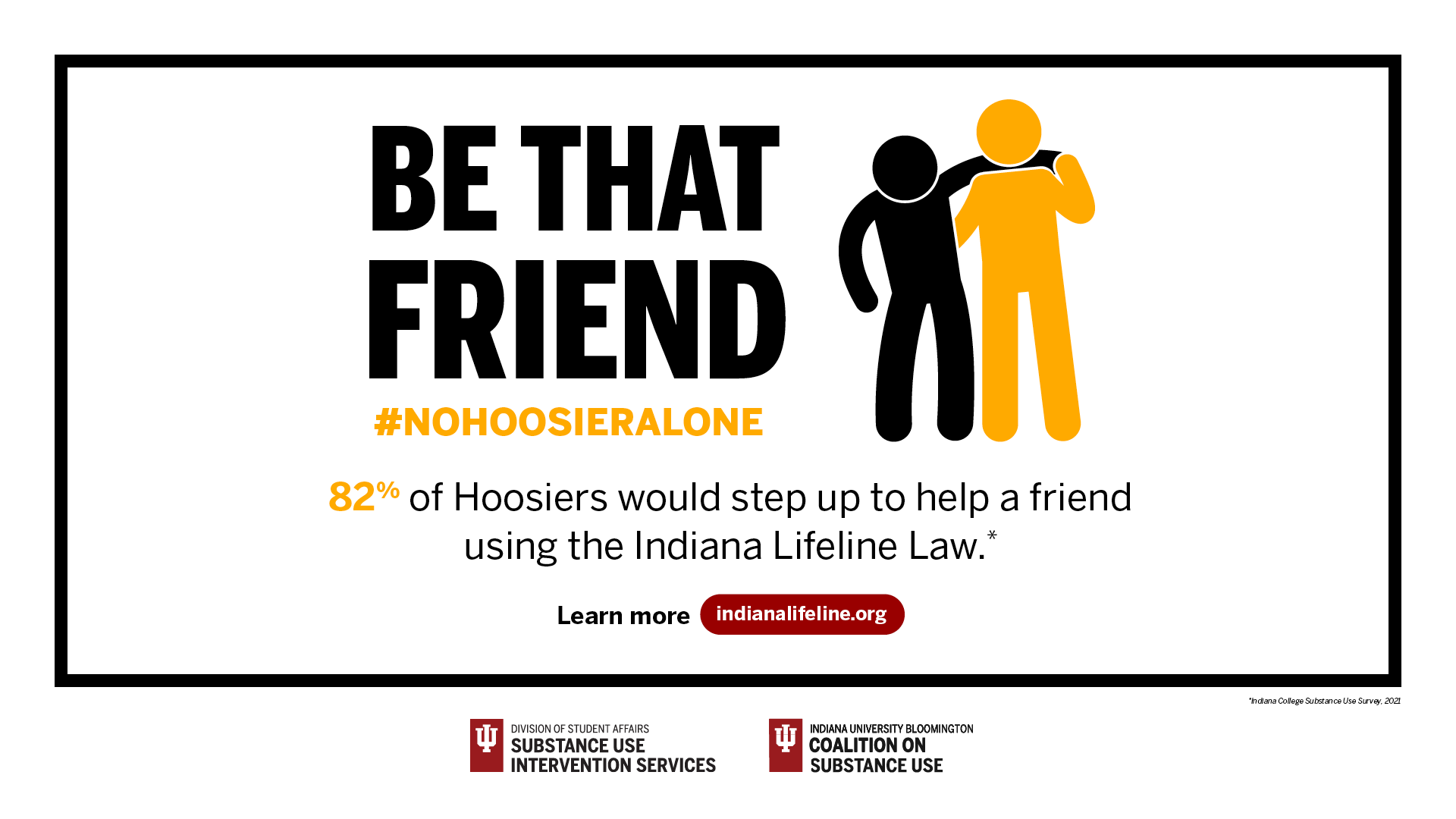
- FOMO, or Fear of Missing Out, can lead us to make decisions that go against our values to fit in.
- What are you looking for in your college experience? Connection, exploration, growth, and experimentation can be found in many ways, especially ones that aren’t shared on social media.
- The decisions of the people around us aren’t always accurate to what everyone’s doing, thinking, or saying. What evidence is there that you’re really missing out?
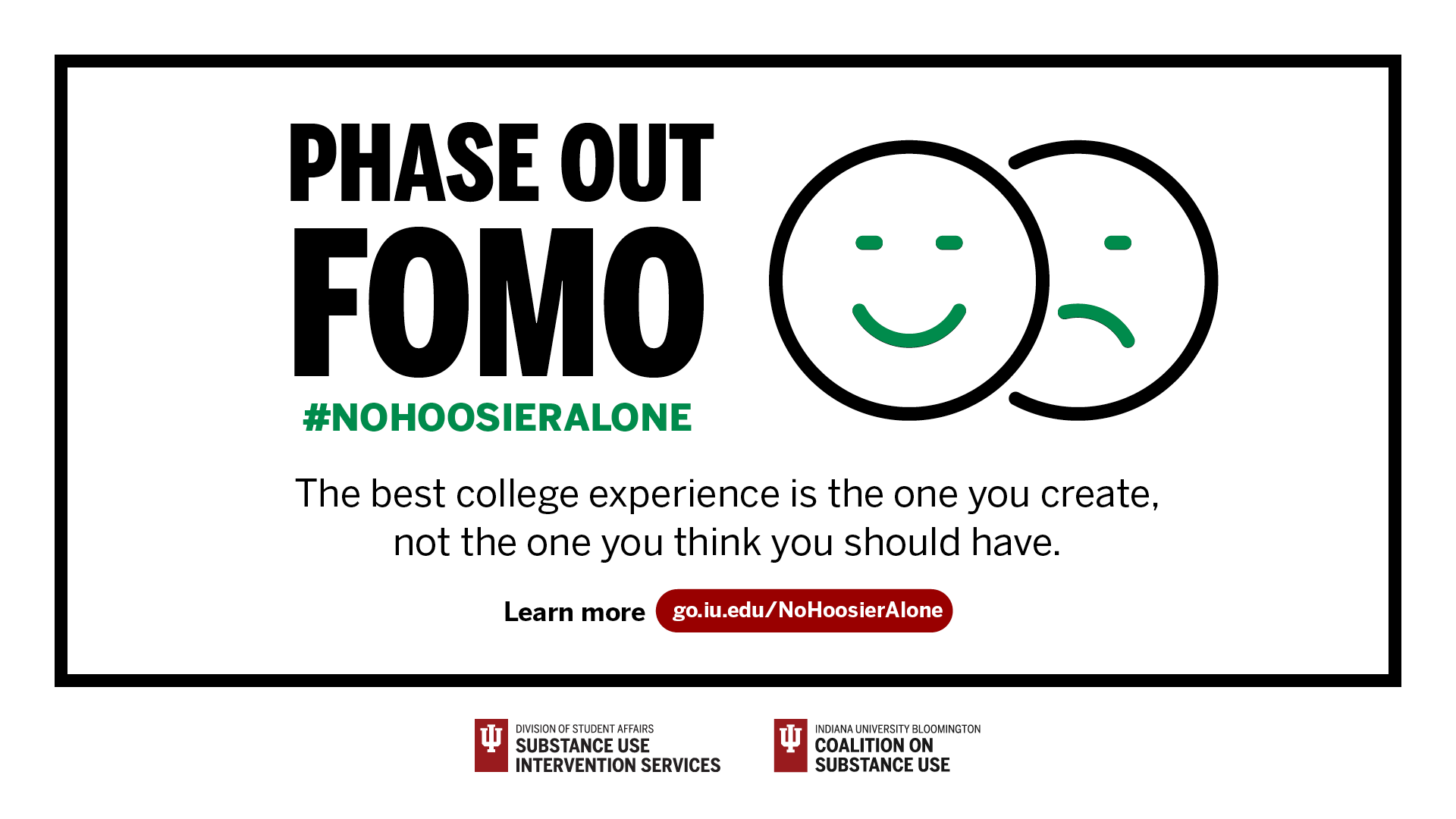
- Choosing to drink? Standard drinks provide a way to measure how much alcohol is in your drink of choice.
- One 12 oz can of beer, one 5 oz glass of wine, and one 1.5 oz shot of 80-proof liquor all equal one standard drink.
- Knowing your drinking pace (standard drinks per hour) can help estimate your BAC. Click here to use a BAC calculator.
- Binge drinking, or a dangerous pattern of drinking behavior, is defined as 5+ standard drinks in a single event for men and 4+ standard drinks in a single sitting for women. Learn more about binge drinking here.
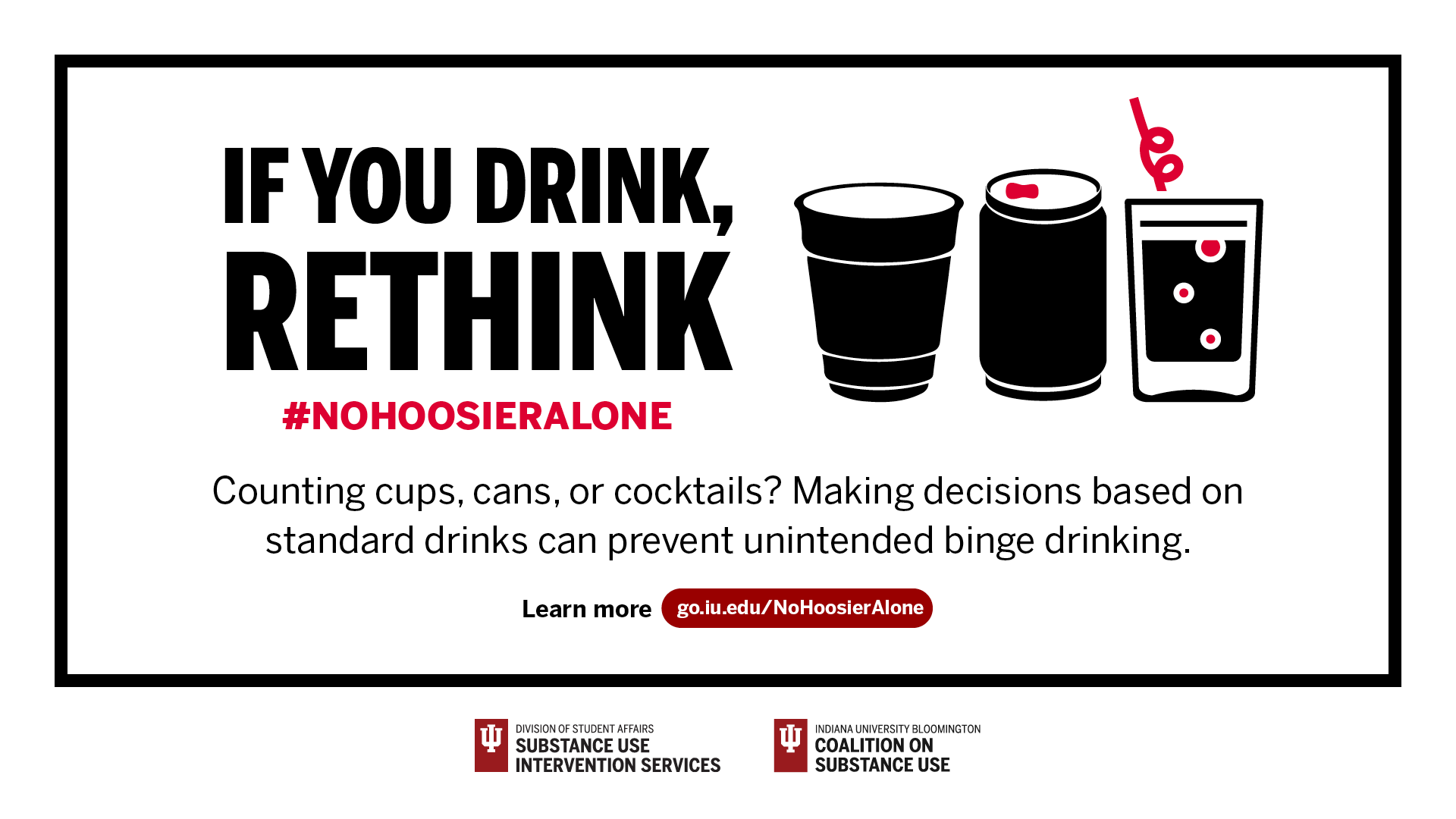
- Alcohol isn’t part of everyone’s college experience!
- There are many reasons why Hoosiers choose not to drink, such as religion and culture, family risk factors for developing substance use disorders, and just not being interested in drinking.
- The decision whether or not to drink in a situation can also be influenced by set and setting, or the mindset, expectations, and physical and social environment. A negative mindset and unfamiliar environment can negatively impact how someone feels while drinking.
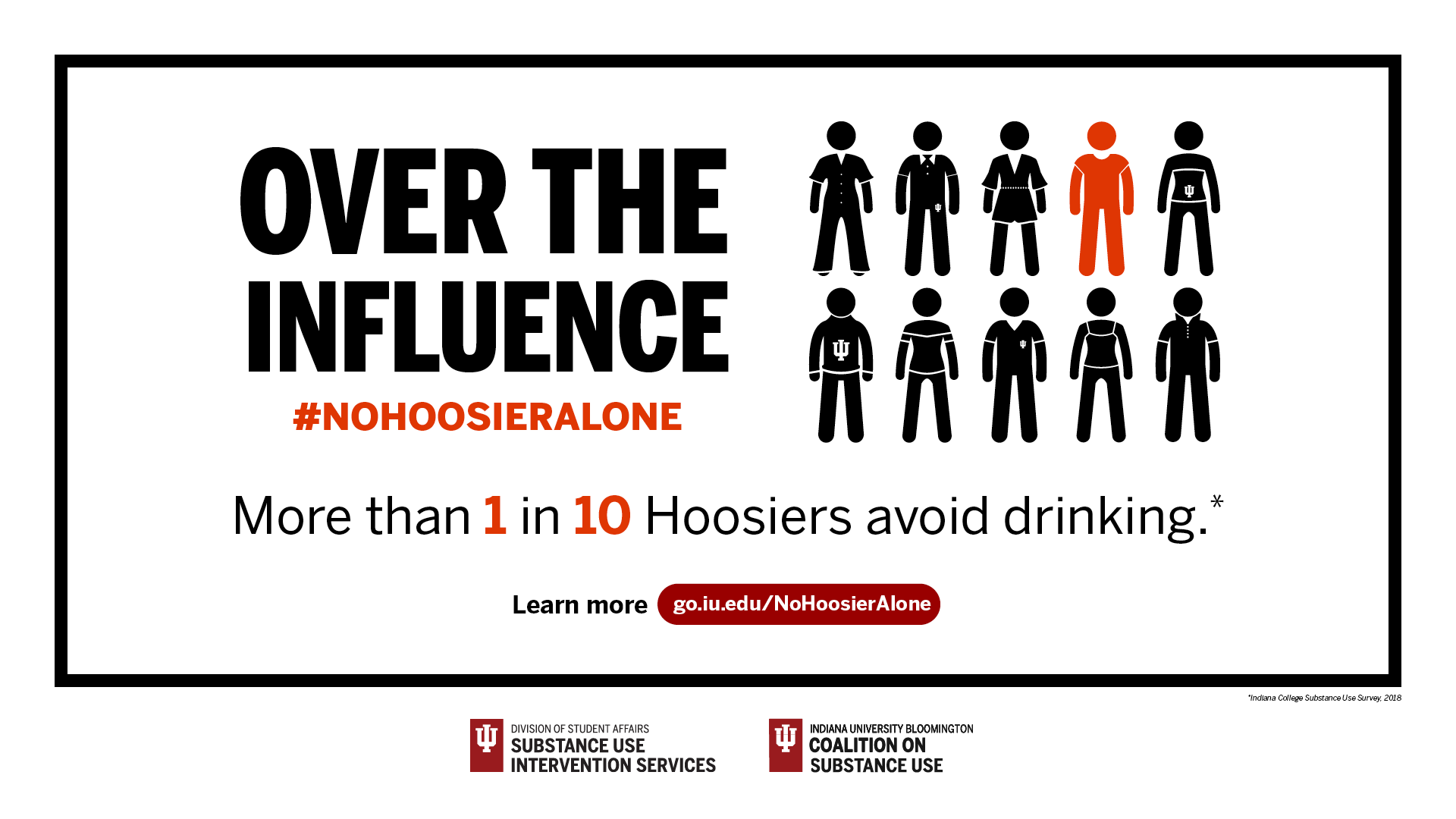
- Prescription stimulants like Ritalin and Adderall are used to treat ADHD and narcolepsy by increasing the activity levels of dopamine, norepinephrine, and serotonin in the brain and body.
- Taking stimulants without the supervision of a doctor can lead to or worsen cardiovascular issues, irritability and anxiety, and insomnia.
- Adderall is classified as a Schedule II controlled substance, meaning that it carries a high risk for addiction when misused.
- Researchers at the University of Pennsylvania found that use of Adderall by individuals who were not diagnosed with ADHD did not improve cognitive functioning or academic outcomes—they thought they were performing better, but they weren’t (2014).
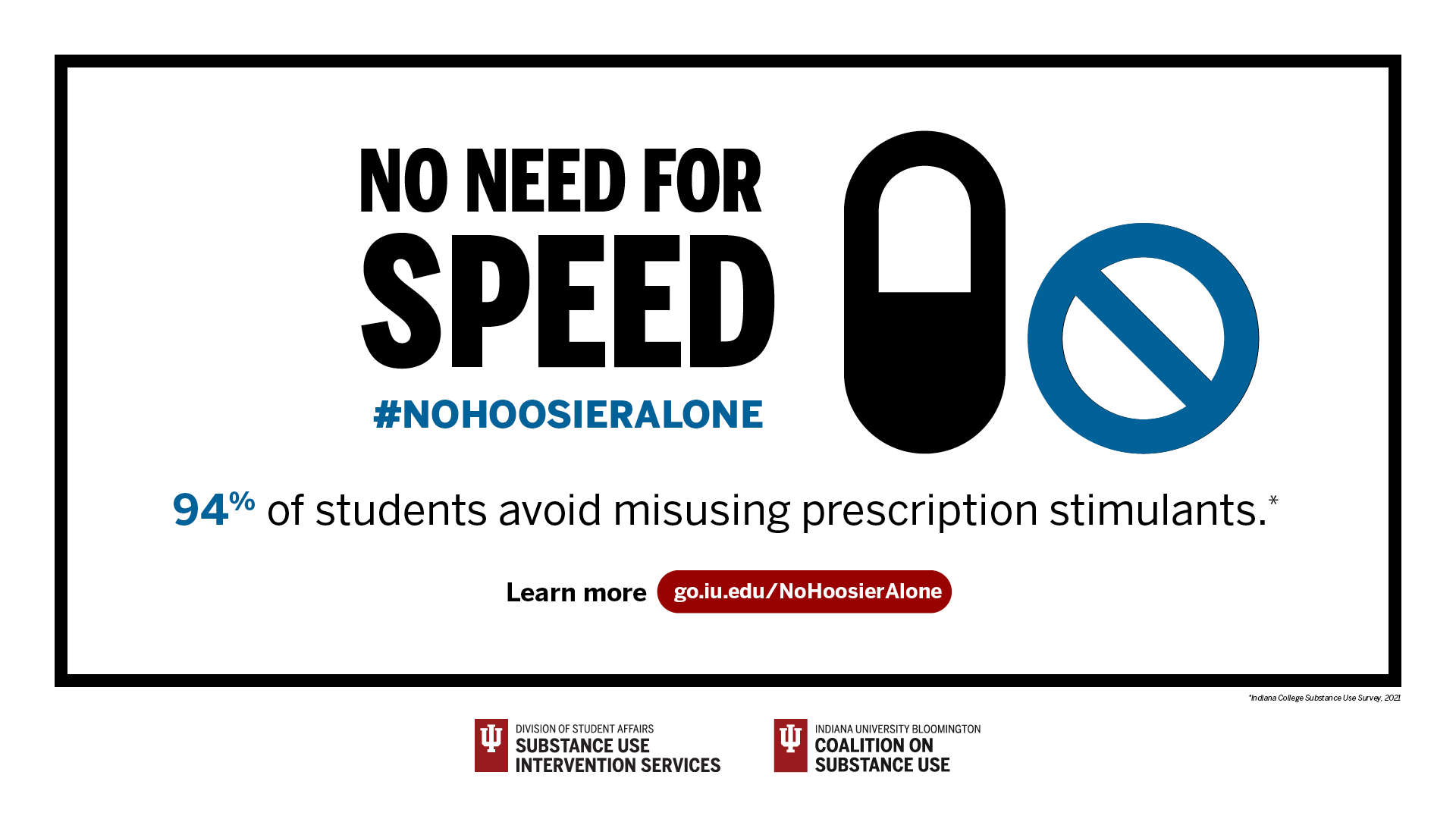
- According to SAMHSA, recovery is a process of change through which individuals improve their health and wellness, live a self-directed life, and strive to reach their full potential.
- The Collegiate Recovery Community serves a spectrum of students, from those who come into college deciding to not use substances to those who are interested in cutting back on their substance use.
- If you’re looking for substance-free events on campus, the Collegiate Recovery Community and IU Late Nite host sober events like karaoke, cookouts, and craft nights year-round.
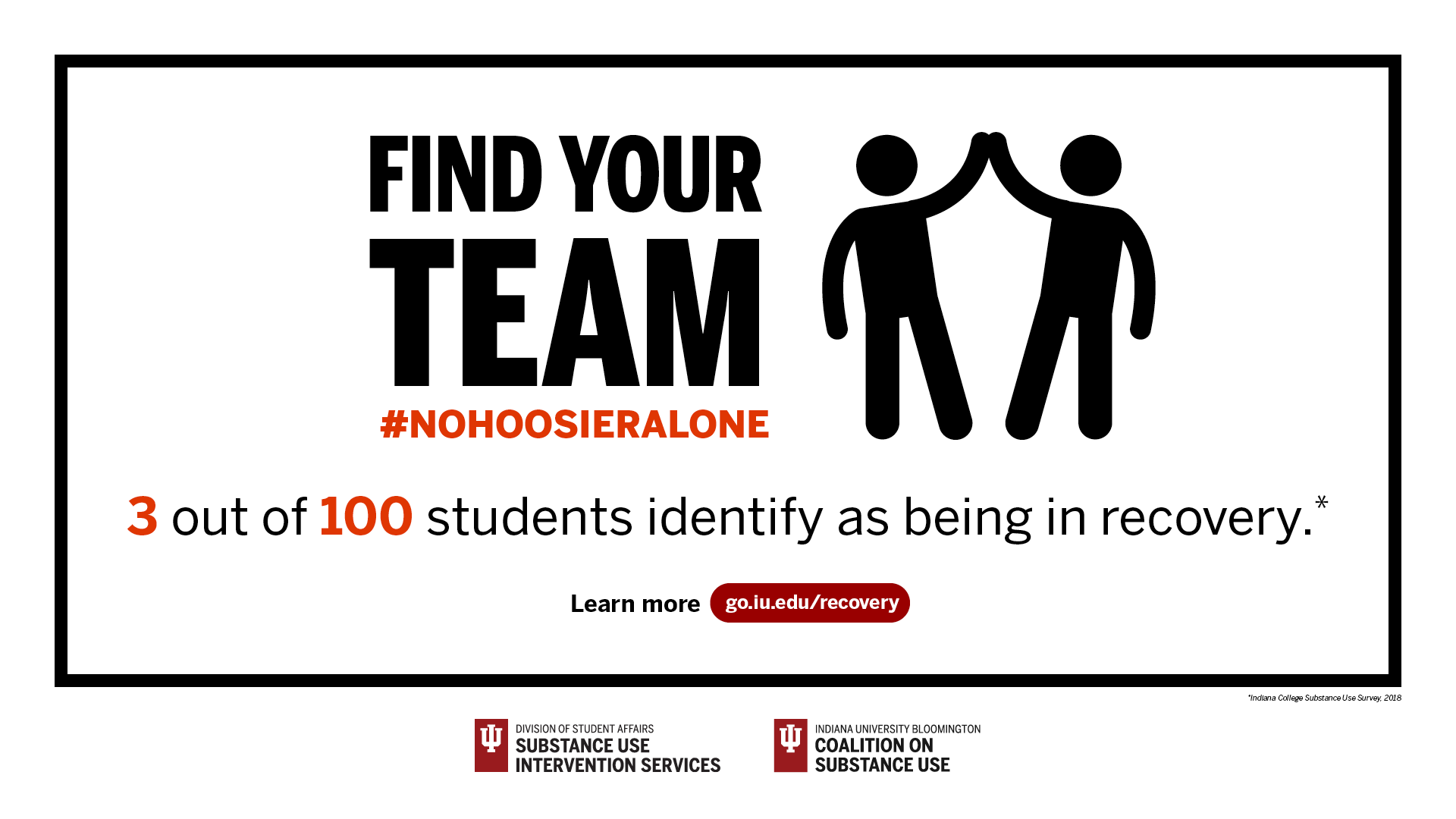
- Inside the stadium, speed is the key, but drinking alcohol too quickly can bypass your body’s cues and signs that you’ve had too much.
- Because it can take an average of 45 minutes for the body to absorb alcohol into the bloodstream, your blood alcohol content (BAC) can continue to rise after you’ve made the decision to stop drinking.
- Keeping a maximum pace of one standard drink every hour can make it easier to recognize warning signs such as impaired balance, nausea, and slurred speech—and stop drinking before more serious consequences occur.
- Alternating water with alcoholic drinks, having a snack, and keeping an eye on the clock are all strategies to remain mindful of your rate of drinking.
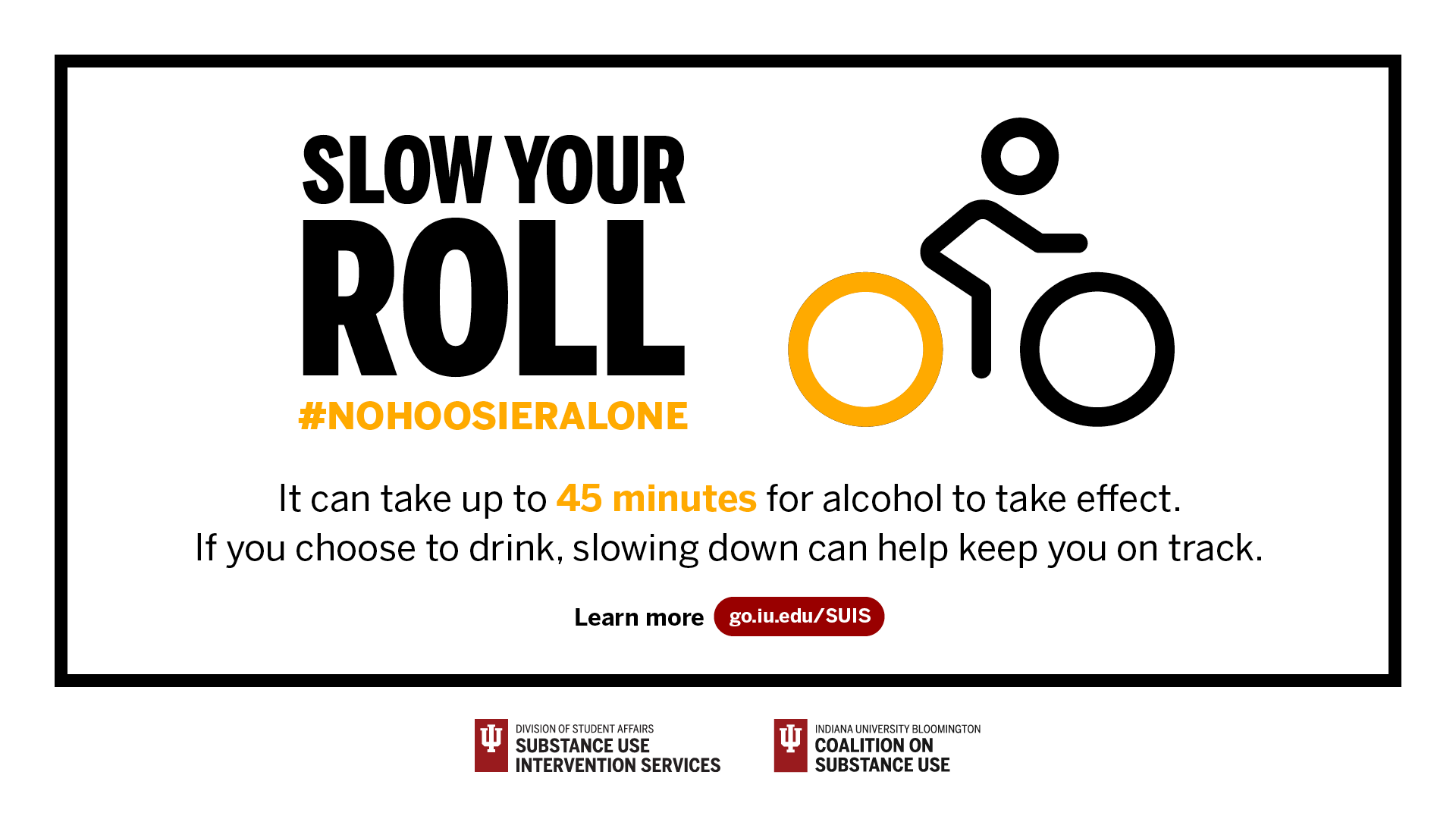
- For many, smoking cannabis or using products with THC can actually cause anxiety, paranoia, agitation, nausea and even hallucinations.
- Endocannabinoid receptors are found in many areas of the body, including the amygdala. The amygdala is a structure in the brain that regulates fear, anxiety, and aggression.
- If you choose to use cannabis, smoking or ingesting small amounts at a time in a safe environment and at a low concentration can reduce the risk for negative effects.
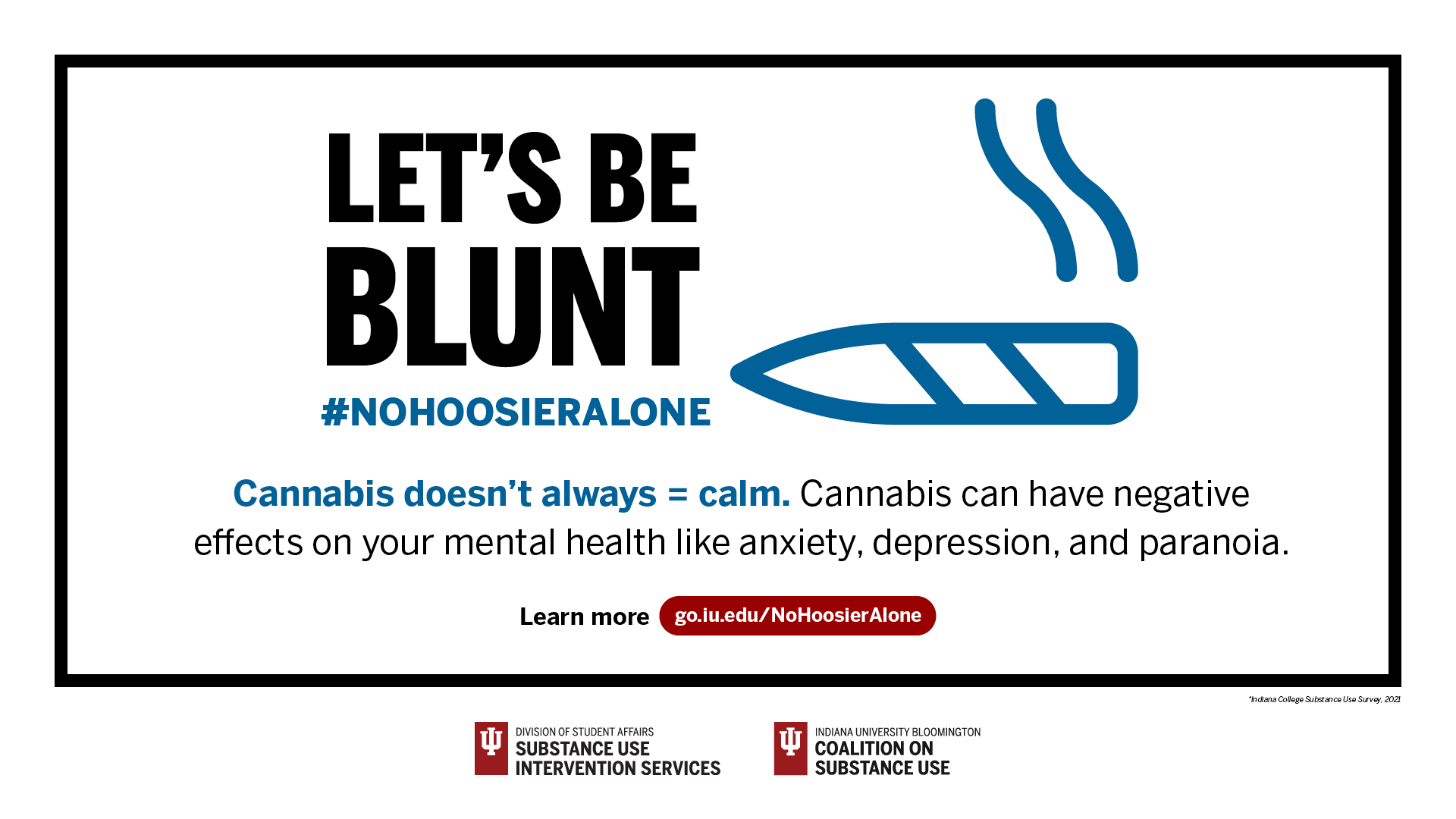
- Substances are classified as either stimulants, which speed up the body’s processes, or depressants, which slow down the body’s processes.
- Drugs such as cocaine, Adderall, and caffeine are stimulants, while alcohol, Xanax, cannabis, and opioids are depressants.
- If someone combines two stimulants or two depressants (ex. cocaine and caffeine, or alcohol and cannabis), this can have a potentiation effect. The risks and effects of combining substances of the same type can be exponentially higher than using each of these substances by themselves.
- If someone combines a stimulant and a depressant (ex. Cocaine and alcohol), this can have an antagonistic effect. This doesn’t cancel out the effects of both substances! Even if the effects of one substance may be masked by the other, your body is still processing both. Making decisions only off of how you feel can lead to accidental overdose.
- If you plan to combine substances:
- Use a small amount of each at a time, less than you would use of each alone.
- Have a friend with you who knows which substances you’re using and can respond in an emergency.
- Know the signs of overdose and how to respond.
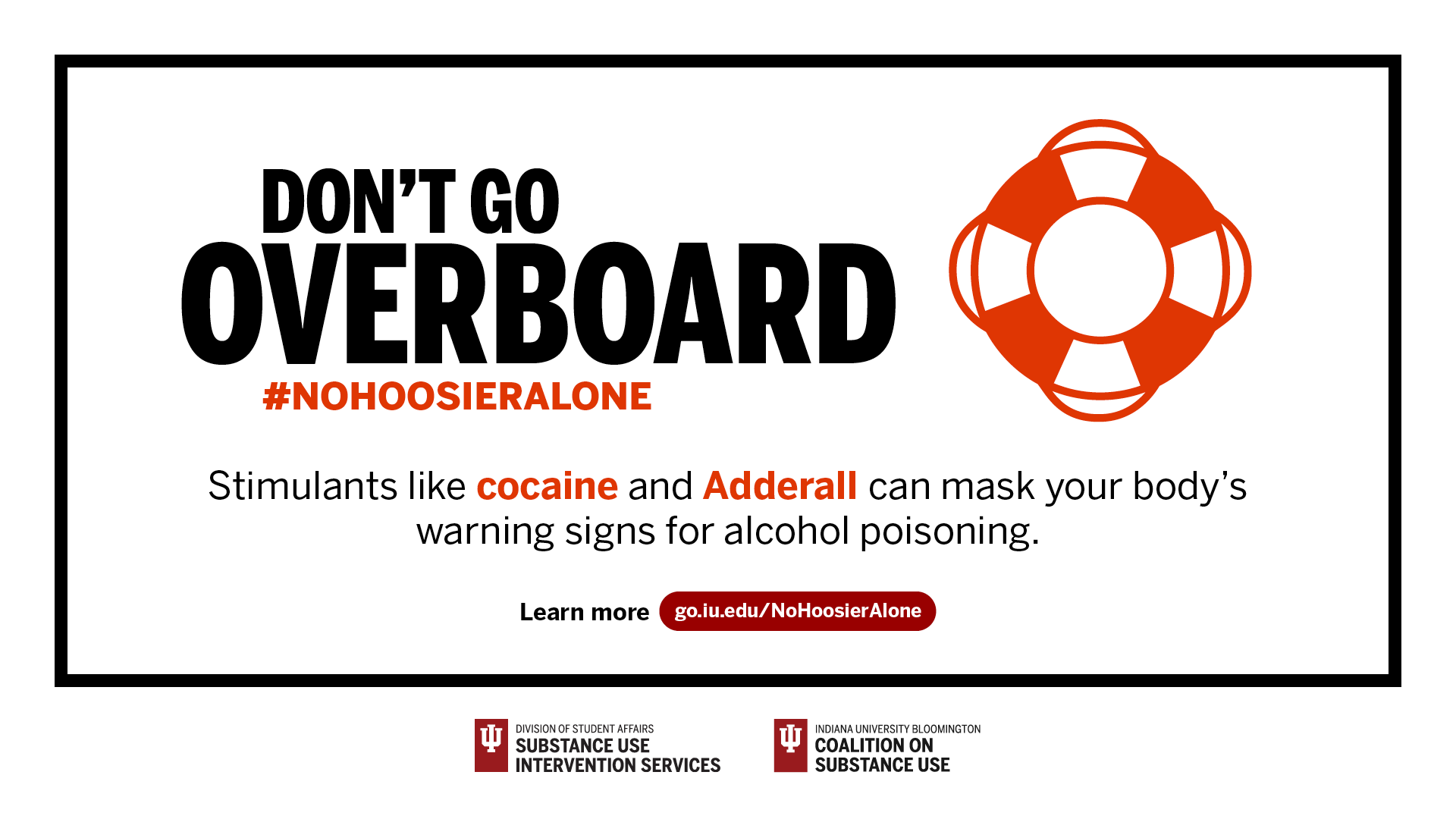
- When you’re there but not really there, what memories are you missing out on? “Blacking out” is the informal term for the effects of alcohol use on the consolidation of new memories.
- Blackouts typically occur at Blood Alcohol Content levels of 0.16 and higher, but factors like being on a depressant medication, drinking quickly, and drinking on an empty stomach can raise the risk of blacking out.
- Research on drinking patterns has found a correlation between blacking out and other alcohol-related consequences, like missing work or school, having lower grade point averages, ending up in the hospital for a medical emergency, or being arrested.
- Alcohol can significantly impact your brain’s ability to process social information.
- Alcohol myopia, or “psychological short-sightedness,” can lead someone to act on the most obvious social cues and information.
- Impulsivity, which is also commonly experienced after drinking, also creates an environment where a drinker is more likely to be susceptible to their emotions without considering the consequences.
- Combining alcohol with stimulants like cocaine can significantly raise the risk for aggressive behavior on top of psychological blunting.
- Tobacco remains the leading cause of preventable death and disease in the county.
- Nicotine as a stress reliever is an illusion. Research shows that nicotine can worsen symptoms of anxiety and depression.
- Nearly 70% of smokers say they want to quit and make attempts to quit each year.
- Combining nicotine replacement therapy with coaching can more than tripe a smoker’s chance of quitting.
- Commit to quit with us today! Request a free Quit Kit and make an appointment to meet with a cessation coach.
ollege should be about learning, not losing. That 'quick bet’ on a game or spin on an app? It adds up, fast. What starts as fun can drain your wallet, wreck your grades, and stress you out big time.
The truth? The house always wins. And you? You lose more than money.
If you’re struggling with gambling, you don’t have to go all in alone. Health Promotion has counselors trained to help with gambling issues. Call 812-856-3898 or email subuse@iu.edu to schedule a free appointment.


